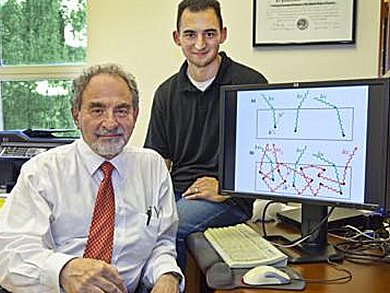Researchers around Eli Yablonovitch, University of California, Berkeley, USA, demonstrated that the better a solar cell is at emitting photons, the higher its voltage and the greater the efficiency it can produce.
Since 1961, scientists have known that, under ideal conditions, at most 33.5 % of the energy from incoming photons will be absorbed and converted into useful electrical energy. As of 2010, the highest anyone had come to achieving this efficiency was 26 %. This is for flat-plate, “single junction” solar cells, which absorb light waves above a specific frequency. “Multi-junction” cells, which have multiple layers and absorb multiple frequencies, are able to achieve higher efficiencies.
Solar cells produce electricity when photons from the sun hit the semiconductor material within a cell. The energy from the photons knocks electrons loose from this material, allowing the electrons to flow freely. The process of knocking electrons free can also generate new photons by luminescence. The idea behind the novel solar cell design is that these new photons – which do not come directly from the sun – should be allowed to escape from the cell as easily as possible.
Alta Devices, USA, co-founded by Yablonovitch, used this new concept to create a prototype solar cell made of gallium arsenide (GaAs). It’s efficiency is 28.3 %. The company achieved this milestone, in part, by designing the cell to allow light to escape as easily as possible from the cell – using techniques that include, for example, increasing the reflectivity of the rear mirror, which sends incoming photons back out through the front of the device.
Image: © Eli Yablonovitch
Presented at the Conference on Lasers and Electro Optics (CLEO: 2012)
The Opto-Electronics which Broke the Efficiency Record in Solar Cells,
Eli Yablonovitch and Owen D. Miller
10:30 a.m. Friday May 11 in the San Jose Convention Center.



